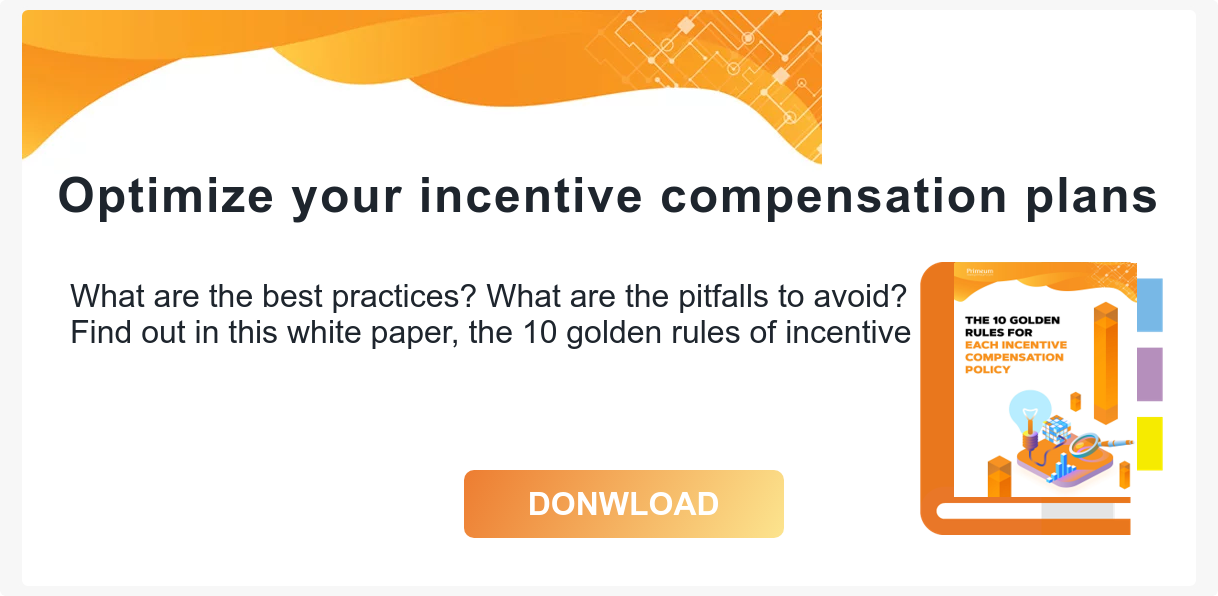“Fifty-five per cent of full-time employees are listening to the market and 35% of them think about a future job within weeks of starting a new job” (Sales Recruitment Market Trends 2021, Uptoo)
From sellers to sales representatives and support functions, employee turnover concerns all companies and all positions. People no longer dream of job security, much to the regret of companies that need to stabilise their teams to express their full economic potential. In the following article, find out how you can innovate to help stop your teams leaving.
1) To innovate against turnover, you need to understand the socio-cultural context
According to a study published by the job portal Cadremploi in 2021, there are three reasons why executives think about changing jobs: they feel unfulfilled, have reached the end of a professional cycle, and can no longer find any meaning in their job.
Today, high turnover is no longer limited to jobs considered to be risky or difficult. Many senior and middle managers, who find themselves in rewarding positions with good working conditions and job security, are ready to leave everything behind and make a fresh start in a completely different direction.
More and more people need to feel self-fulfilled through their work
One of the main reasons for this phenomenon is the need for professional fulfilment, which is becoming increasingly prevalent among employees. Work requires a great deal of personal commitment and is becoming more and more important in the lives of employees, so it is now commonplace for people to do everything possible to work in a field which is enjoyable, satisfying and completely fulfilling.
Each generation wants to have a better impact on the planet
Positive-impact or SSE jobs are increasingly popular with employees searching for meaning. The youngest generations, who want to have a positive impact on the planet, as well as the older generations, who want to give more meaning to their lives, are expressing the need to get involved in professional projects that are worthwhile with values that serve the public good. As a result, more and more employees are leaving the private sector to work for associations, humanitarian organisations or simply companies that are more committed to CSR.
We are living in a society that is shunning routine
With all the experiences the world has to offer, the incentives to travel for varying lengths of time, and the desire to try out new things that drive people every day, the idea of staying in the same job in the same company for 20 years is no longer what people want. A good example of this is the new “TeleTraveller” concept, which involves working remotely anywhere in the world with a computer and phone in your backpack.
It has never been easier to go in a new direction
With new laws promoting the freedom to shape your future career, legislators are pulling out all the stops to allow working people to change direction, receive training, acquire new skills, and therefore switch paths completely.
Professional retraining is a fantastic springboard for employees looking to change career paths, but it also entails a significant risk for companies: seeing their employees change direction at the slightest frustration, in search of a perfect utopian satisfaction. The world of work is not always a source of happiness: there are frustrations, conflicts, risks and uncertainty about the future. These are aspects of working life that fewer and fewer employees are willing to tolerate.
What are the prospects for innovation?
Against the current backdrop which has seen many employees lose their bearings, it has become difficult to flesh out long-term career plans. To reduce turnover rates, companies therefore need to rethink their approach to work and be innovative to retain employees. Some attempts have been made, notably with the creation of the position of the CHO (Chief Happiness Officer) whose aim was to establish connections between employees and improve the atmosphere at work, but this is no longer enough. Search for meaning is now more important than the need for a good atmosphere at work, and loyalty levers need to be sought elsewhere.
2) Sellers, sales representatives and support functions: find ways to retain all employees in your company
“Fifty-eight per cent of employees surveyed say remote working is the main perk a company could offer them, besides remuneration” – ((Robert Half survey, « Recruitment Trends in 2021, Functions & Skills »)
Use compensation to retain staff
Remuneration is still an important way of retaining staff, provided you know how to use it. It is not just a question of offering an attractive salary. You need to offer remuneration which is fair for the salaried position and good prospects for earnings and development. In this context, “good” means offering a salary that keeps staff motivated and keen to perform well. Once people obtain a certain salary and progress very little, or not at all, despite achieving a certain performance, disappointment and routine set in and they want to go elsewhere, even though the salary may seem high.
- Set up a performance-oriented compensation plan. With an attractive fixed salary and a variable component of their remuneration that changes according to performance, employees are fully involved in the achievement of their objectives and never see their remuneration as fixed. They know that they are directly responsible for their success and their commitment to success drives their long-term commitment to their company.
Don’t underestimate the importance of company perks
Any perks offered by companies provide an opportunity for employees to feel better in their workplace. This means each perk will be considered when it comes to looking whether the grass isn’t greener on the other side. More than just a source of indirect additional remuneration, these perks help improve employees’ daily lives. Some examples include appealing health insurance offers, extra equipment like a mobile phone for support functions, free sports club membership to encourage self-care, or a nice break room for everyone to enjoy.
- Offer more innovative perks than other companies. Meal vouchers are no longer enough to entice employees. Look to offer perks that you can’t find anywhere else, like extended parental leave, free meals, free exercise classes, a concierge service to reduce the mental load on your staff or free relaxation sessions.
Don’t miss out on working from home
Remote working is now a permanent feature of companies and there is no turning back. Once employees have had a taste of it, it is difficult to take it away, as remote working provides a better work-life balance.
Previously, a company might have feared that its employees would defect to a competitor company located in the same geographical area. But now, employees can join any company in the world thanks to full remote jobs.
The risk of full remote working is losing your best employees to another company; the advantage of it is that you can recruit any profile anywhere in the world – hence the need to be a professional organisation that incorporates remote working in all its forms.
- Make remote working a real recruitment argument. Work on a remote working charter, survey your employees to find out the best remote working arrangement for them, determine how many days a week are needed to stand out from the competition, organise working hours and offer full remote working to broaden your scope of recruitment.
Use your career plan to make a difference
Unless you have a real career plan and long-term visibility, it is practically impossible to retain the best talent. Once again, without the prospect of development or individual support to develop new skills, employees become weary and want to change companies for good. To stabilise your workforce, you therefore need to be able to offer a career path to the talents you want to keep. According to a recent study published by the professional network Hellowork, career opportunities are the third biggest reason for changing jobs, notching up 41% of responses.
- Offer training that gives your employees new skills, encourage internal mobility, seek to develop each position in the company, and encourage talent that wants to take on more and more responsibilities by supporting their approach.





